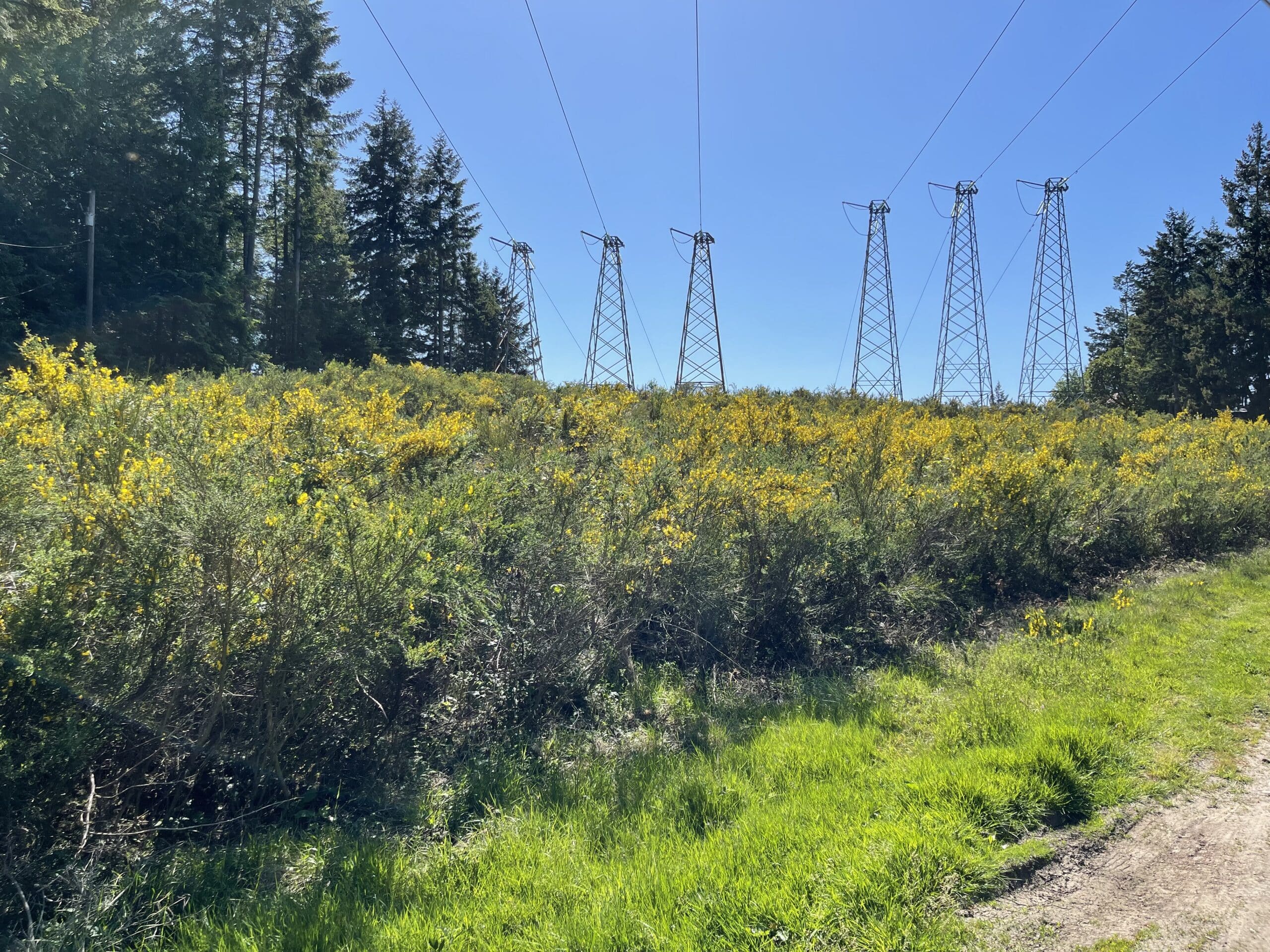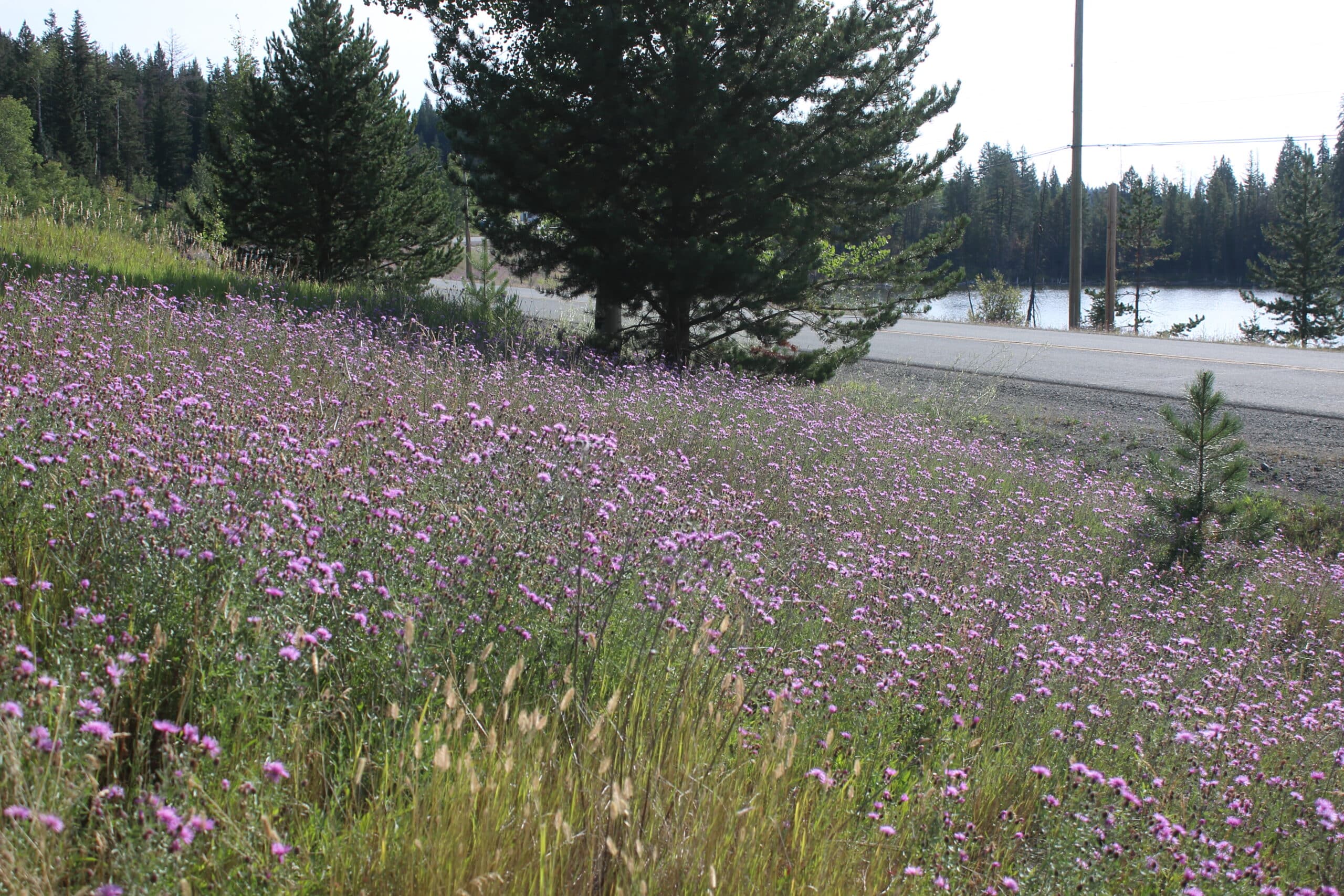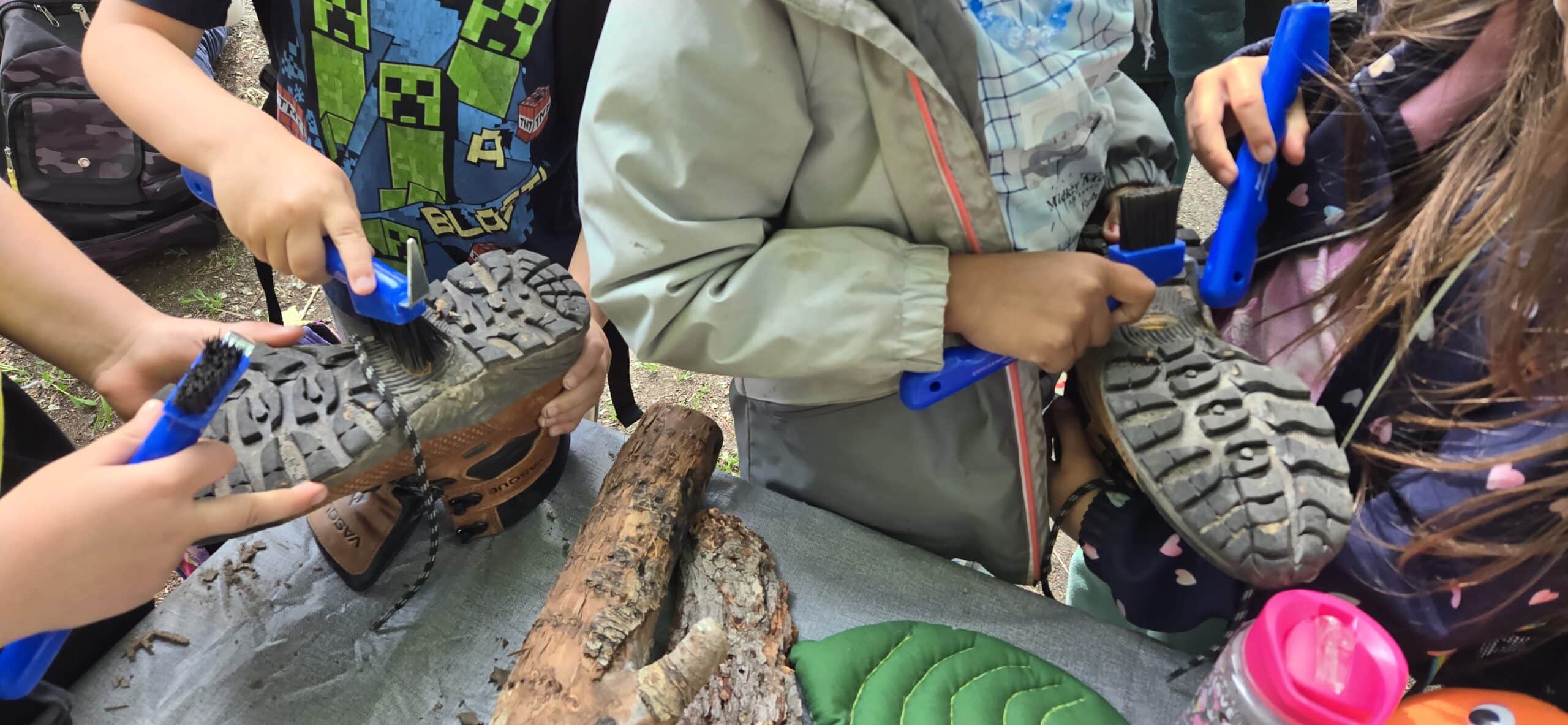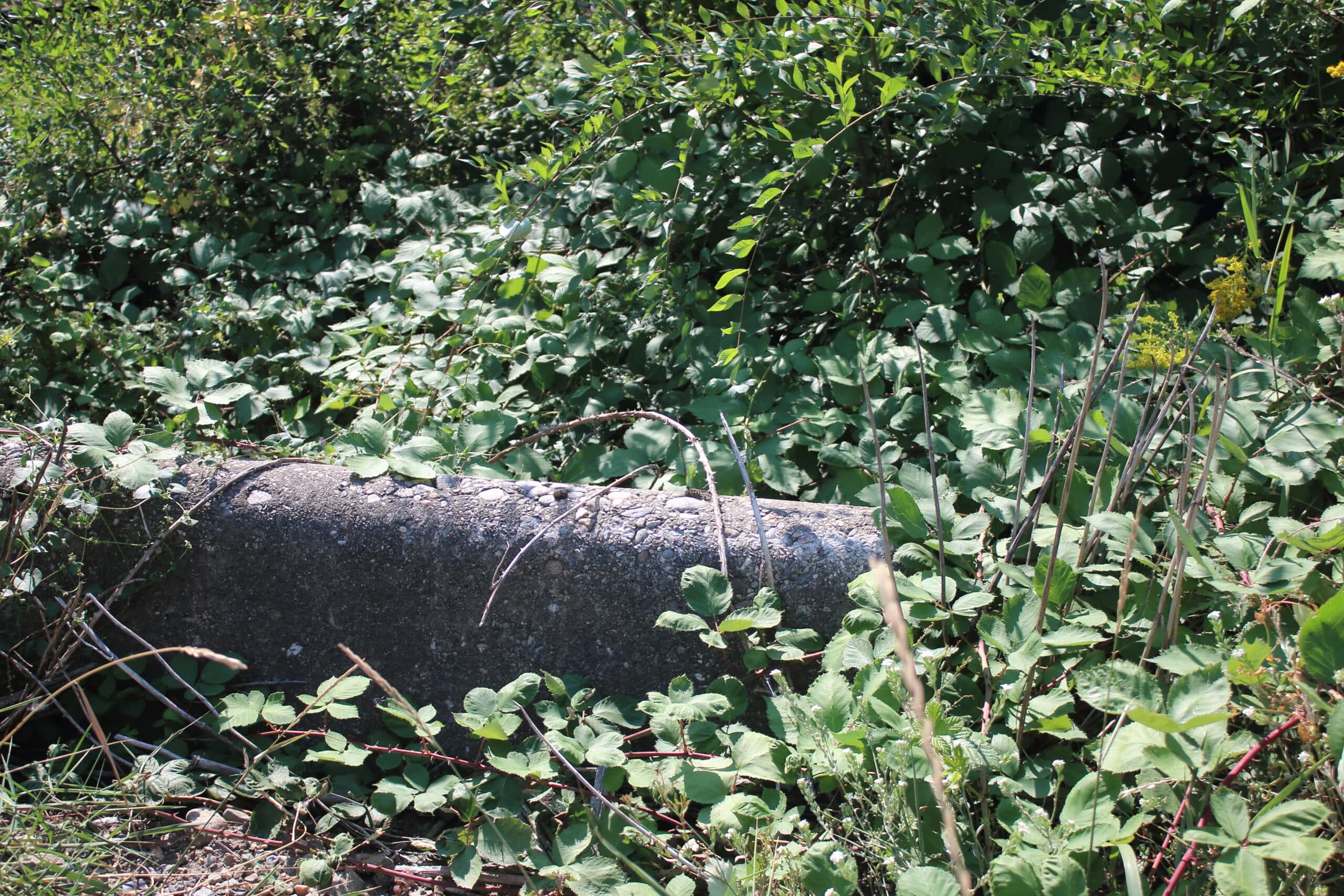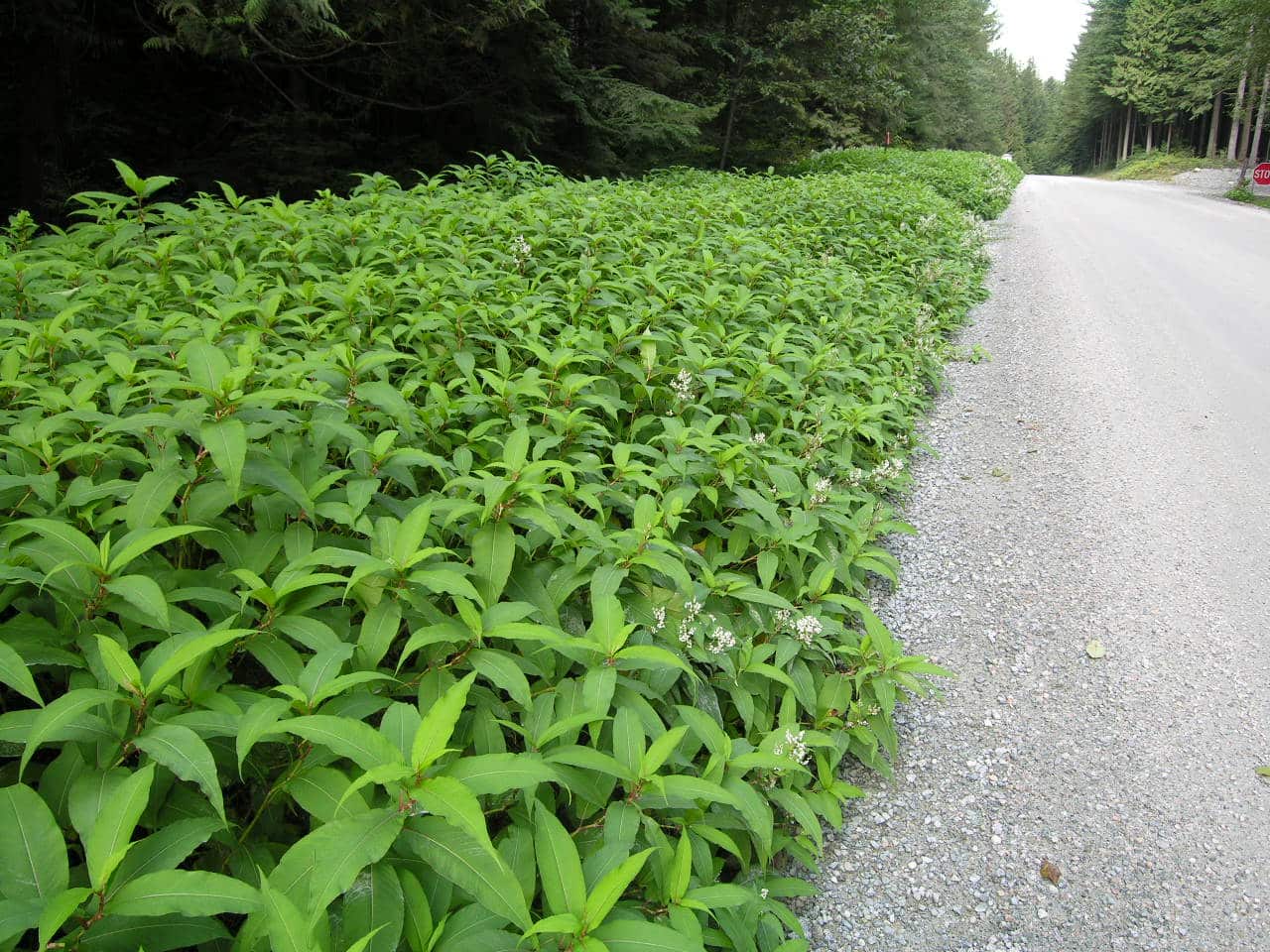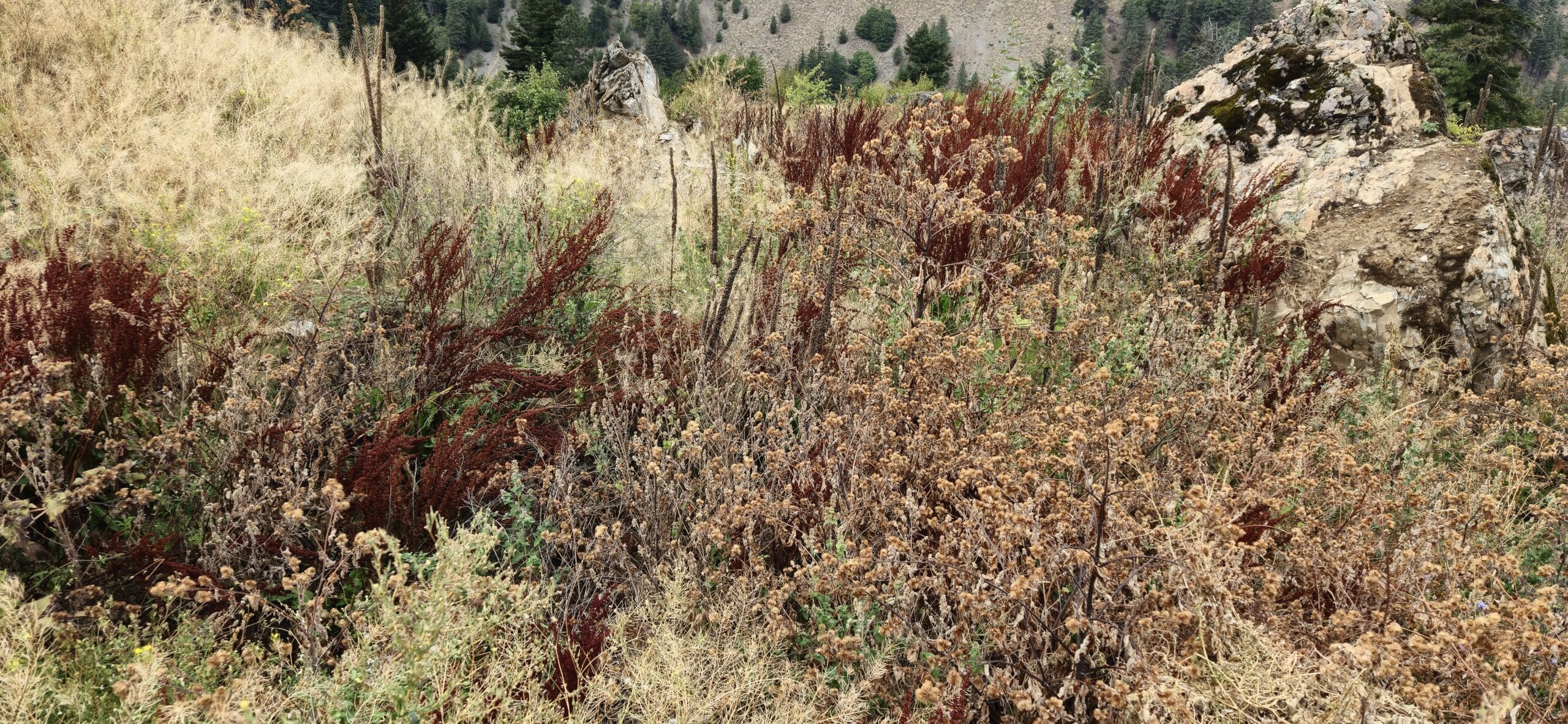By Lisa Houle | December 16, 2022
When visiting a historic park, one would expect an accurate representation of what life was like in the area during that given time. From the shops with their wares to the clothing worn by actors, the experience should feel authentic, like a step back in time.
Thanks to the recent help of the StrongerBC Quesnel Action Team, Barkerville Historic Town and Park plans to keep the history of its area intact by discouraging the growth of plants not native to the area.
While conducting invasive plant surveys on trails around the Wells/Barkerville area in BC this past summer, the Quesnel team approached management at the park to gain access to the trails leading to Barkerville. The landscaper showed the team around, aware of invasive species in the area but unsure of the best way to deal with the infestations.
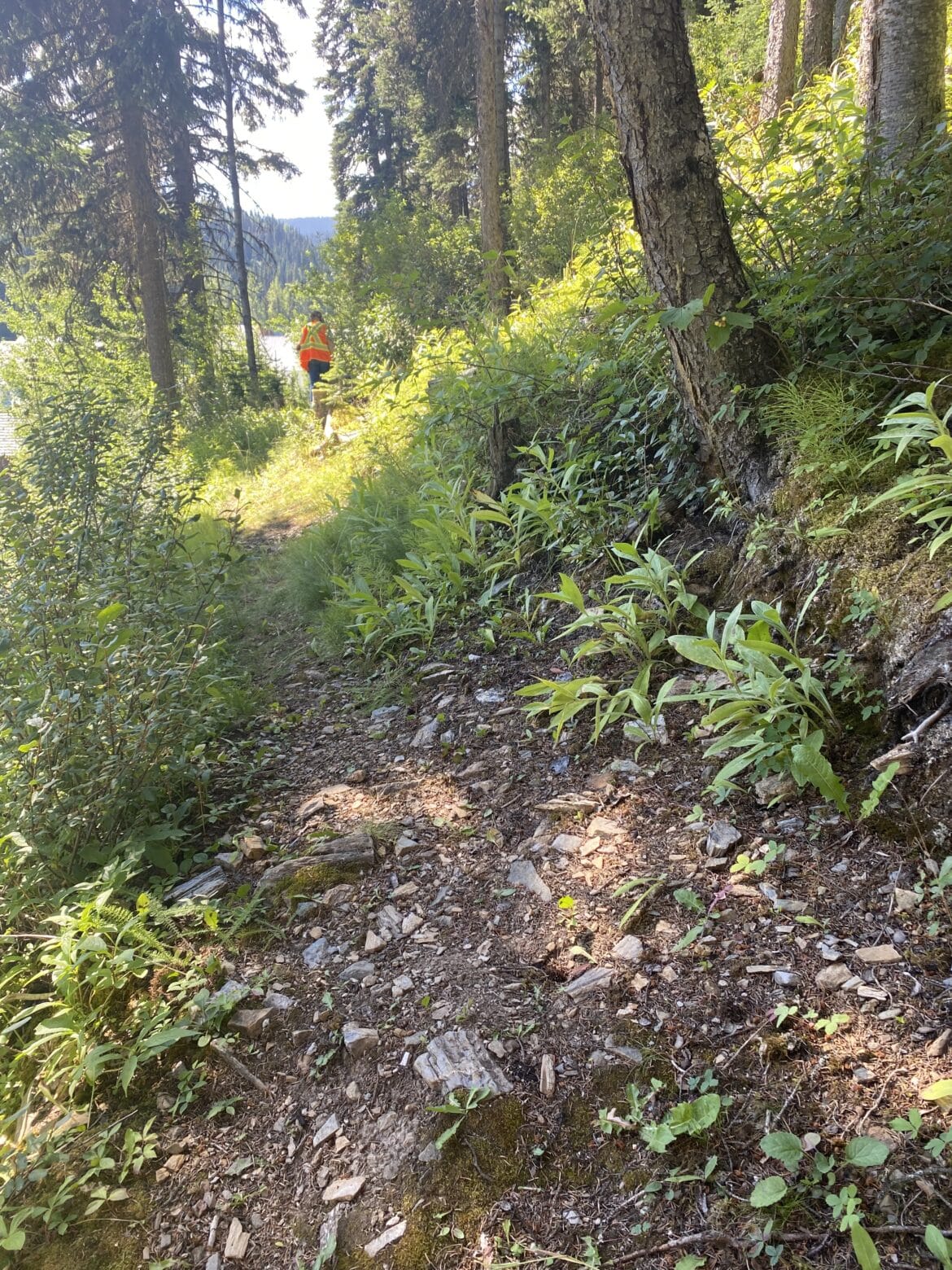
The team found Mountain bluet (Centaurea montana), a Priority 1 species for the Cariboo, as assigned by the Cariboo Chilcotin Coast Invasive Plant Committee (CCCIPC). Under their classification, this species is newly established with a limited distribution but has the potential to flourish and spread if it is not eliminated or managed. The objective for this priority level is elimination.
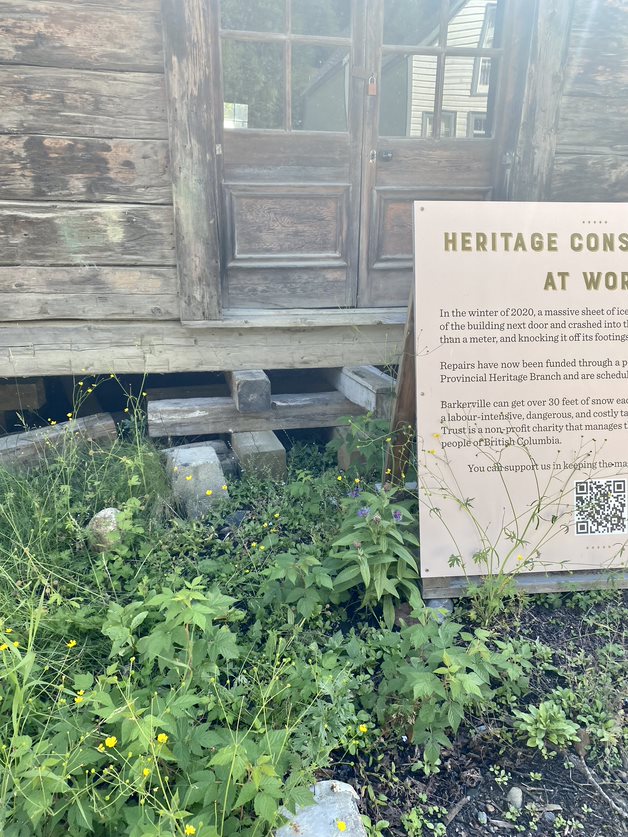

“The initial surveys were conducted in August while we still had a team of four, but the management was done in October by myself and Nolan Dyck. We waited until after the park had officially closed to visitors before doing management as we knew we would be spraying herbicide,” said Robyn Lakes, Quesnel Action Team Supervisor for ISCBC.
“There were patches of Mountain bluet around the town which we treated with either herbicide or hand-pulling. Other species of concern were Field scabious (Knautia arvensis), Common tansy (Tanacetum vulgare), Canada thistle (Cirsium arvense), Oxeye daisy (Leucanthemum vulgare), and Orange and Yellow hawkweed (Hieracium spp.). Those infestations were much smaller, and we were able to treat them with herbicides.”
Field scabious and Common tansy are Priority 2 species in the North Cariboo. The goal for those species is to prevent them from spreading outside containment zones like the one around Cottonwood House Historic Site on the Goldrush Trail, which is also managed by Barkerville. In total, approximately 0.8 hectares were sprayed (directly onto the target plants only) and 1.5 bags of Mountain bluet and Field scabious were removed.

Barkerville Historical Village is a popular tourist spot, and the movement of people through tourism is a well-known way that invasive species spread.
“It was great to be able to work in collaboration with Barkerville. They have a lot of visitors throughout the season, which means a lot of opportunities for invasive species to spread. By removing these plants from Barkerville and its affiliated sites, we can prevent their further spread,” said Robyn. “They are also very eager to learn more and train their staff on invasive species. This would provide not only an opportunity for staff to be educated on invasive species, but also for staff to educate guests to the park. We were able to come up with a management plan for Barkerville, enabling them to continue the management – and hopefully the eradication – of the invasive species on site.”
Mandy Kilsby, Curator of the historic park, expressed her appreciation for the team’s work and for the thorough report.
“This document makes it very easy for us to plan out future work on the site and to train groundskeeping staff in what to look for,” said Mandy. “You’re welcome to come visit us any time!”
To help prevent the spread of invasive species: stay on designated trails only; inspect and remove dirt, plants and bugs from your clothing, boots, gear, pets, and vehicles before leaving a site; and learn to identify common invasive species and report them. These are all practices encouraged by the behaviour change program Play, Clean, Go.
Find out more about invasive species in BC – take a learning break with some of ISCBC’s free courses: Tourism and Invasive Species and Invasive Species 101.
ISCBC is grateful for funding from the Stronger BC initiative of the BC government to support training and employment for people in jobs that will help protect BC’s biodiversity.
Lisa is a Communications and Outreach Coordinator at ISCBC. She values a diverse environment and connecting with others about environmental protection. In her spare time Lisa enjoys spending time at the ocean and beach combing for sea glass. You can reach Lisa at lhoule@bcinvasives.ca
Share







